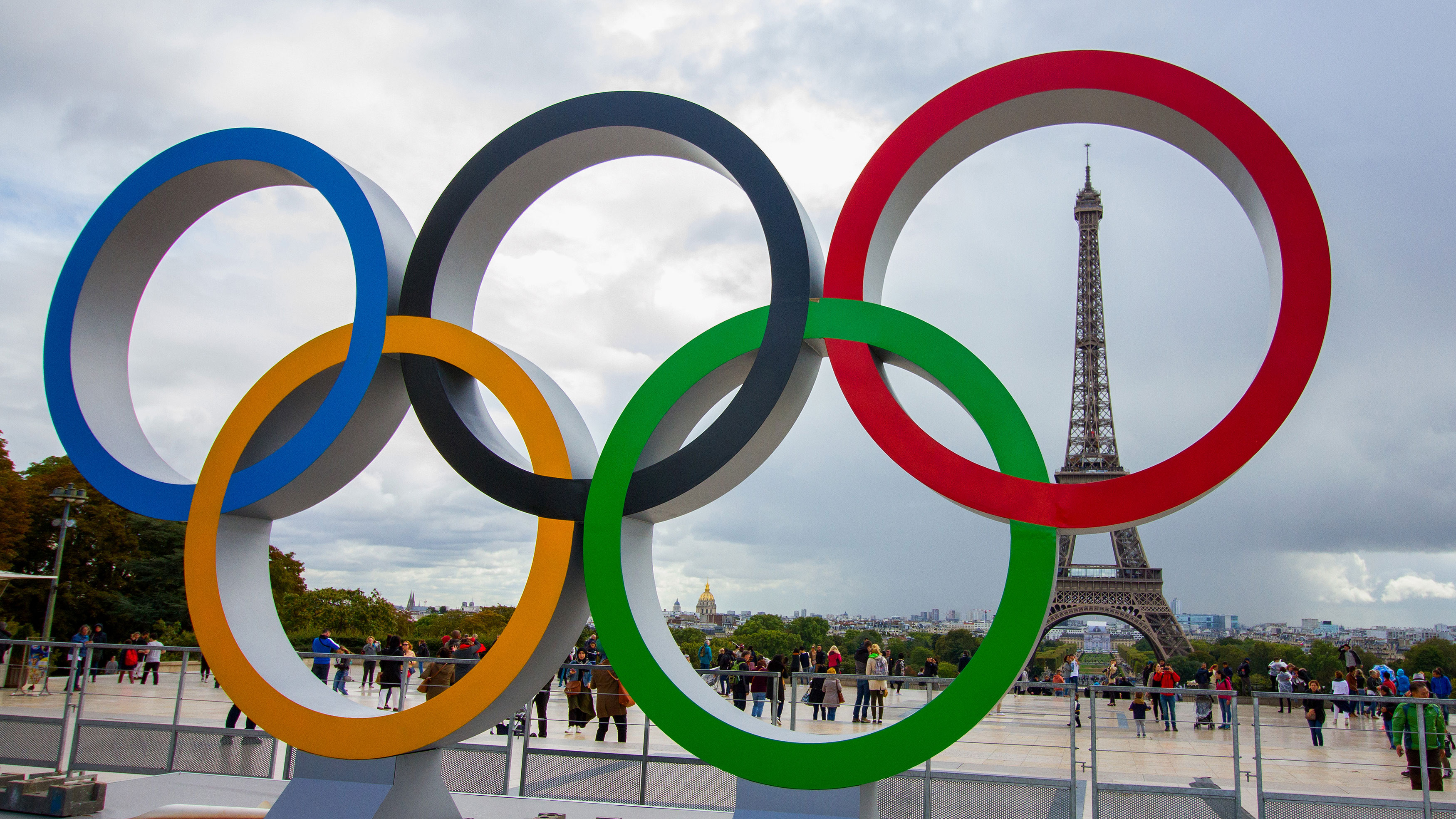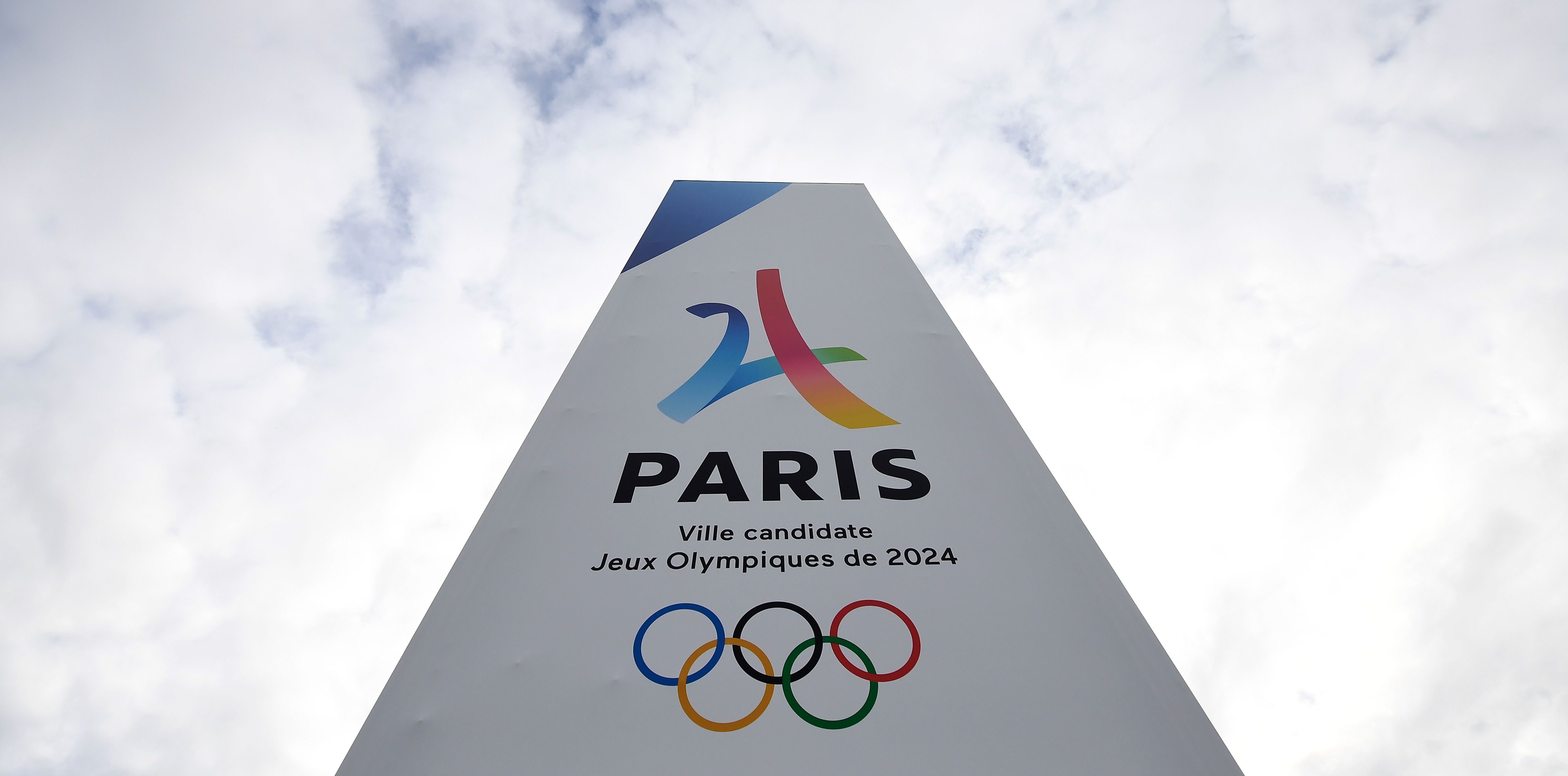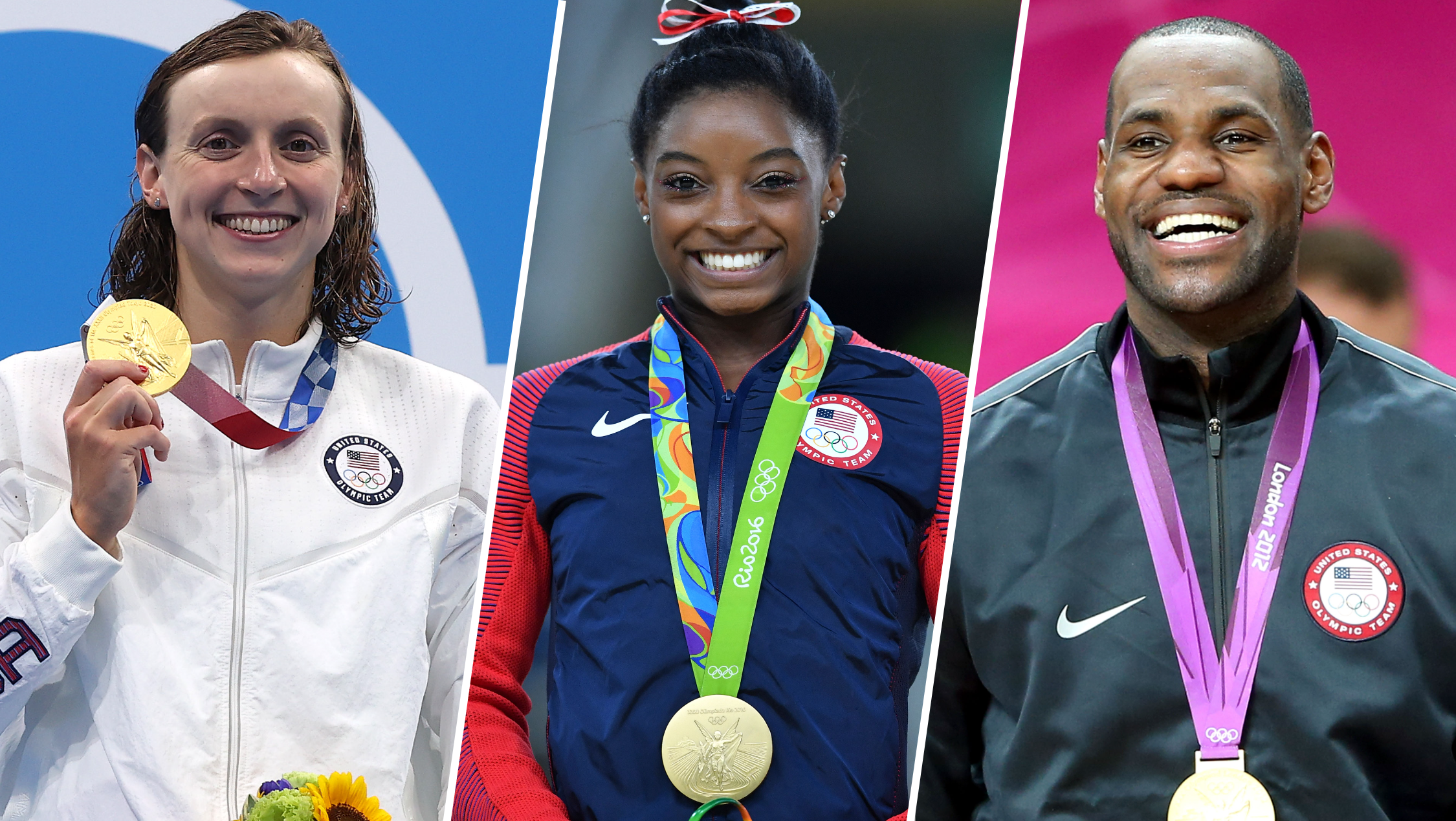The Olympic Games are beamed to billions of people around the world, giving viewers a real-time, close-up look at every pole vault, layup, breaststroke and backflip.
But there is a crucial part of the Olympics experience that remains largely unknown to spectators, sealed off from the camera crews and off-limits to cheering fans — the Olympic Village.
In recent weeks, NBC News spoke with decorated Olympians about life inside the sprawling residential complexes where thousands of athletes sleep, eat, train and socialize. They likened the villages to summer camps, college dorms, crowded hotels and — in the words of gold medalist swimmer Mark Spitz — a “gigantic cruise ship.”
No two villages are exactly alike, but in the mind of gold medalist gymnast Shannon Miller, there is a clear-cut constant. “The one thing that hasn’t changed is that the Olympic Village is truly an athlete’s home away from home,” she said.
The bedrooms
The athletes’ villages in Paris span parts of three towns — Saint-Denis, Saint Ouen and L’Île-Saint-Denis. They will house 14,250 athletes during the Olympic Games and some 8,000 athletes during the Paralympic Games.
But the temporary homes where world class competitors dwell typically aren’t all that luxurious, as most Olympians are quick to point out.
“I think people would be surprised at how minimal and minimalist the Olympics rooms are,” said gold medalist figure skater Brian Boitano, who competed at Winter Games in Sarajevo, Calgary and Lillehammer.
Boitano, 60, recalled that his room at the 1994 Lillehammer Games was “maybe 6-feet-by-12 feet,” adding: “You hardly had an area to unpack your bags. I always laugh thinking about the mattresses. In some of the Olympic Villages, the mattresses were literally just foam. You think: This is the most important competition of my life and I’m sleeping on a foam mattress!”
Get a weekly recap of the latest San Francisco Bay Area housing news. >Sign up for NBC Bay Area’s Housing Deconstructed newsletter.
This year, athletes will doze off on cardboard beds that Paris organizers say are designed for sustainability — part of a wider effort to make the Games more environmentally conscious. (The rooms were built without air-conditioning systems in a bid to cut carbon emissions, but many competitors are reportedly bringing their own mobile AC units.)

Gus Kenworthy, a British American dual citizen who skied for the U.S. at the 2014 Sochi Games and the 2018 Pyeongchang Games, said he and his Sochi teammates tried to spruce up their rooms with Team USA duvet covers, pillowcases and other paraphernalia.
“It’s obviously a big push to get the Olympics done, so some things take a lower priority,” Kenworthy said. “In my second Games, at Pyeongchang, our apartment had a picture of an oven and a picture of a refrigerator. They had installed the cabinetry but they hadn’t put in the appliances. It was very strange. It was almost like a Fisher-Price play kitchen or something,” he added with a laugh.
Spitz, 74, described the lodgings at the 1968 Summer Olympics in Mexico City as “a bunch of high-rise apartment complexes” bedeviled by a frequently broken elevator.
“In each bedroom, there were four people,” Spitz said. “Two sets of cots — doubles — maybe a pinch smaller than twin-size beds. No furniture. No kitchens. … They had bathrooms, obviously, but everything had what I’d call the low-cost IKEA look.”

Each host city comes up with a plan for housing athletes — sometimes in Spartan condominiums, sometimes in emptied-out college dorms, sometimes in makeshift mobile units.
In certain cases, athletes find the simple bedrooms conducive to the intense focus needed to perform at the highest level. The tight quarters can also foster immediate bonds among roommates, Boitano said. “In Calgary, sharing that tiny apartment with seven guys — we were such a tight unit, he said, “and there was so much camaraderie.”
The cafeteria
The athletes who spoke to NBC News described the Olympic Village cafeteria as the bustling center of social activity, a festive gathering space where competitors can introduce themselves, break bread with people from other countries, and fuel up for the high-stakes events.

“It’s kind of the heart of the Olympic Village,” Boitano said. Kenworthy, who most recently competed for England at the 2022 Beijing Games, agreed: “The kitchen is the heart of the home, and it’s that way at the Olympics.”
Hannah Roberts, who earned a silver medal in BMX freestyle at the Covid-era 2020 Tokyo Games, discovered that the cafeteria was already crammed with athletes as early as 4 a.m. “I was like, oh my goodness. You can’t get a space,” Roberts told the NBC Sports podcast “In The Village” in 2021.
Bonnie Blair, a gold medalist speed skater who competed at four Olympic Games over a 10-year period, described feeling like “a kid in a candy store” when she first walked into the dining hall at the 1984 Sarajevo Games.
“I just wanted to go to the cafeteria and sometimes I could hang out there for hours, because that’s where all the athletes were — athletes from other sports that you watched and admired, looked up to and all that.”
Blair, 60, said her favorite memory from that Olympics was the afternoon she spent having lunch with figure skater Scott Hamilton and twin brother ski racers Phil and Steve Mahre: “I felt like I had died and gone to heaven.”
“Those guys don’t remember having lunch with me, but I for sure remember having lunch with them,” Blair said. “I was this up-and-coming athlete, inquisitive about what they were doing, and I’m sure I asked them a gazillion questions. They were probably like: Oh my God, who is this kid?”
Miller recalled that the cafeteria at the 1992 Barcelona Games had virtually every kind of cuisine imaginable — and, maybe more importantly, a reminder of home for a 15-year-old girl from Oklahoma.
“I just wanted to go to the cafeteria and sometimes I could hang out there for hours, because that’s where all the athletes were — athletes from other sports that you watched and admired, looked up to and all that.”
Blair, 60, said her favorite memory from that Olympics was the afternoon she spent having lunch with figure skater Scott Hamilton and twin brother ski racers Phil and Steve Mahre: “I felt like I had died and gone to heaven.”
“Those guys don’t remember having lunch with me, but I for sure remember having lunch with them,” Blair said. “I was this up-and-coming athlete, inquisitive about what they were doing, and I’m sure I asked them a gazillion questions. They were probably like: Oh my God, who is this kid?”
Miller recalled that the cafeteria at the 1992 Barcelona Games had virtually every kind of cuisine imaginable — and, maybe more importantly, a reminder of home for a 15-year-old girl from Oklahoma.
This year, French athletes obviously won’t need to go far for a taste of home. The restaurants and cafes inside the Paris village will serve up to 40,000 meals a day, and an “authentic bakery” will be open to Olympians who want to learn how to make fresh baguettes, according to organizers.
The social life
The things Olympians do between official events tell you a lot about the spirit of the times. Hamill, who competed in Innsbruck in the era of the Bee Gees and “Saturday Night Fever,” remembered that her village featured a disco — though she never actually set foot inside.
“I think our dorm was far enough away that we didn’t really hear,” she said, “but you could always tell when the party was really gearing up.”
Blair, who competed at the Olympics amid the rise of personal computing, flashed back to the hours spent tooling around on the early version of what was once called the World Wide Web.
“I remember in Albertville we had some sort of communication system on a computer where you could send messages to other athletes that were at the Olympics,” she said. “I remember sitting next to Kristi Yamaguchi and Nancy Kerrigan on neighboring computers, and that’s where I got to know them.”

The breaks between competitions and meals leave room for athletes to watch other sports, catch up on highlights — and, in recent years, try to go viral.
Ilona Maher, a rugby sevens player who competed at the 2020 Tokyo Games, passed the time making viral TikToks with her teammates and “testing out those cardboard beds,” as she told the “In The Village” podcast in 2021. In one TikTok, she and her teammates evaluated how one bed could withstand yoga poses, skipping, “dramatic fainting” and clap push-ups. (The bed survived.)
The vibe during downtime tends to be loose and friendly. Boitano fondly remembered a supportive atmosphere where “all the American athletes are rooting for each other and they go to each other’s events.” He said athletes at his Games tended to leave encouraging notes for each other (“Good luck on your next race!”) on bulletin boards.
But that’s not to say that elite athletes lose their competitive edge when they’re hanging out inside the village. Alexi Pappas, a Greek-American runner who represented Greece at the 2016 Summer Olympics in Rio, told The New York Times that athletes can turn cutthroat on a dime in the village’s game lounge.

“When you challenge a Russian weightlifter to a game of ping pong (like my dad did), you will probably lose,” Pappas said. “Even though there is not a medal at stake here in the game lounge, it is nearly impossible for Olympic athletes not to try their best. It comes from the same immutable competitive instincts as my determination to always peel my oranges in a single peel. We can’t help it.”
Of course, Olympic Villages often attract speculation about other behind-the-scenes activities.
“The condoms! That’s what everybody wants to know,” Blair said. ‘Oh, everybody’s having sex in the villages. The condoms! They’re out of condoms!’ But that’s not what the village is really all about.”
“I went to four Olympics and I don’t feel like: Oh, there’s just tons of sex going on. I’m sure there’s … things that happen. But it’s not like it’s all that happens,” she added with a laugh.
Ryan Lochte, the record-holding swimmer, seemed to suggest otherwise in a 2012 interview with ESPN Magazine, telling the publication that he estimated “70 percent to 75 percent of Olympians” are having sex during the Games.
“Hey, sometimes you gotta do what you gotta do,” Lochte was quoted as saying.
Boitano, who told NBC News he “didn’t know anybody who was hooking up,” said he understood why the idea of hundreds of athletes pairing off inside the Olympic Villages regularly captures the public imagination.
“It’s a romantic idea, all these hot athletes in the primes of their lives all hooking up,” Boitano said. “I can understand why it’s out there and why people run with it.”
Ultimately, as gold medalist swimmer Summer Sanders told ESPN, most Olympians abide by a simple motto: “What happens in the village stays in the village.”
This story first appeared on NBCNews.com. More from NBC News:





